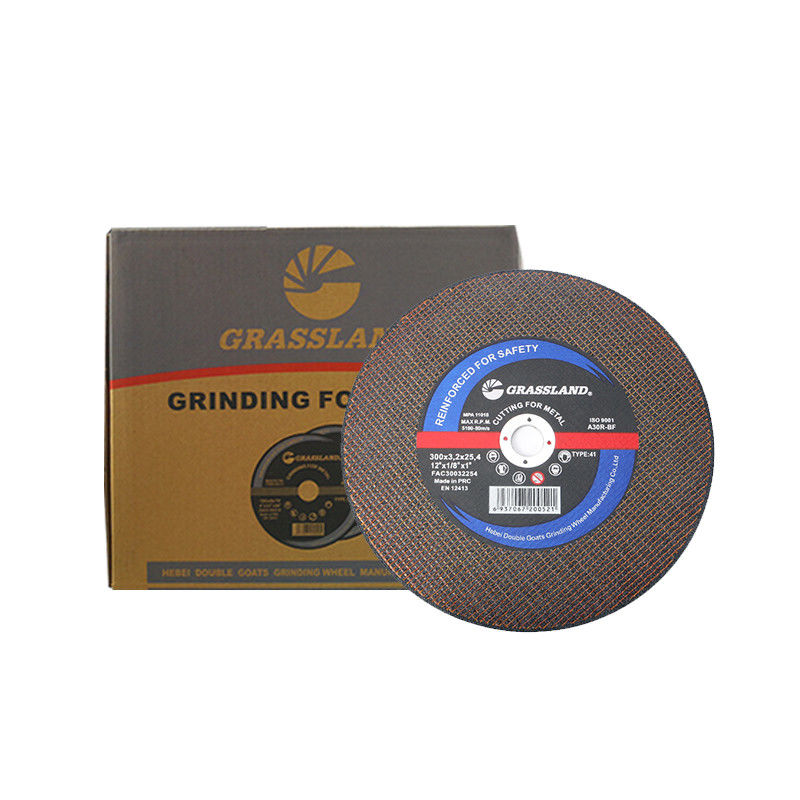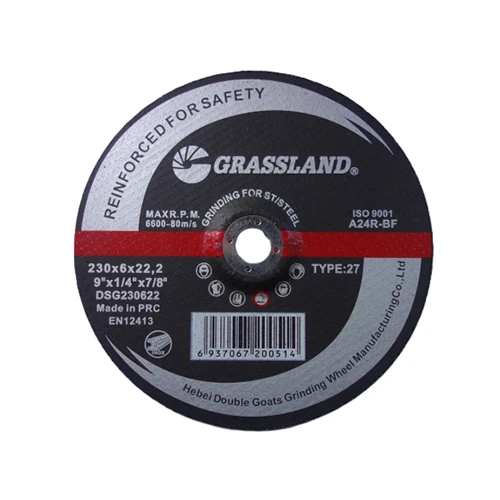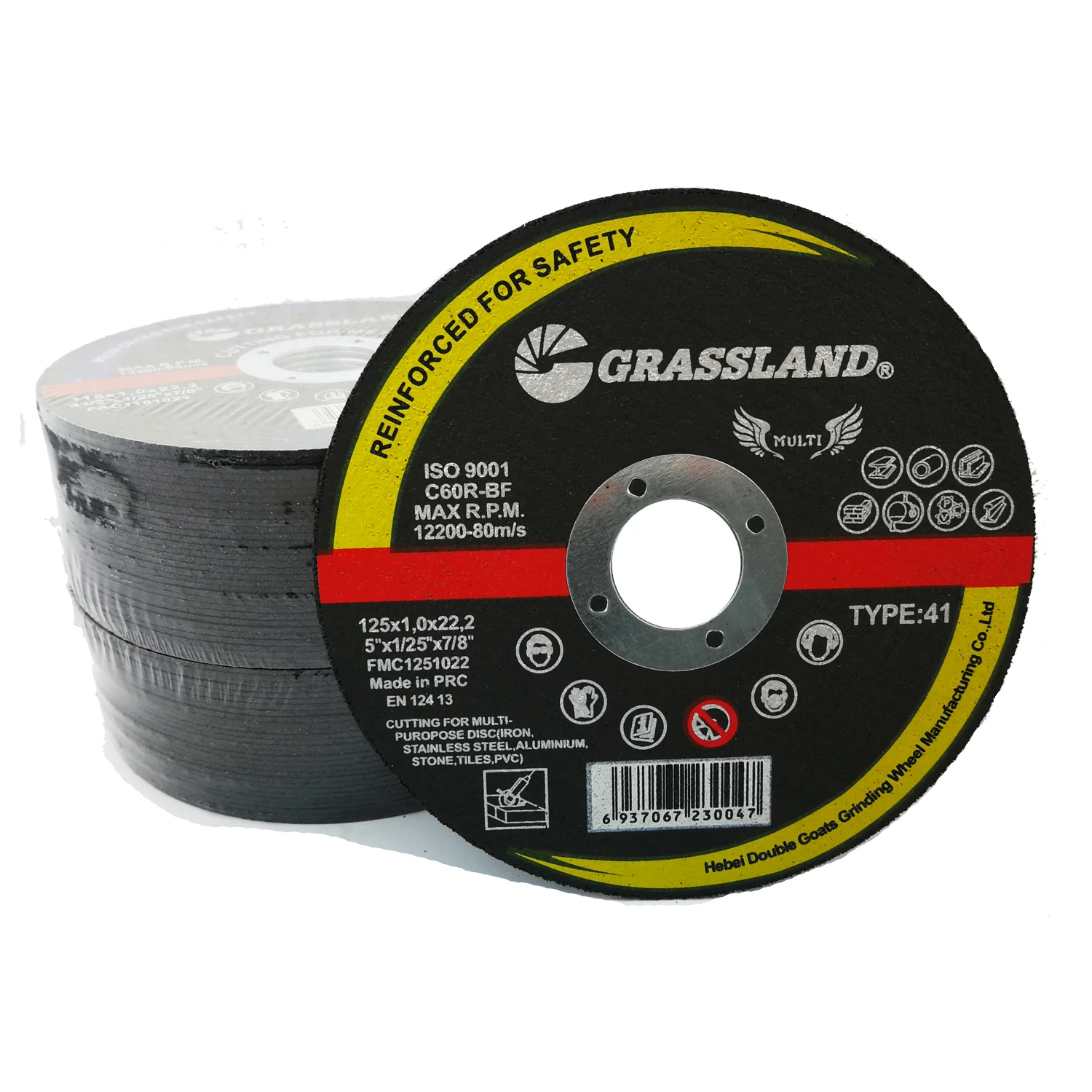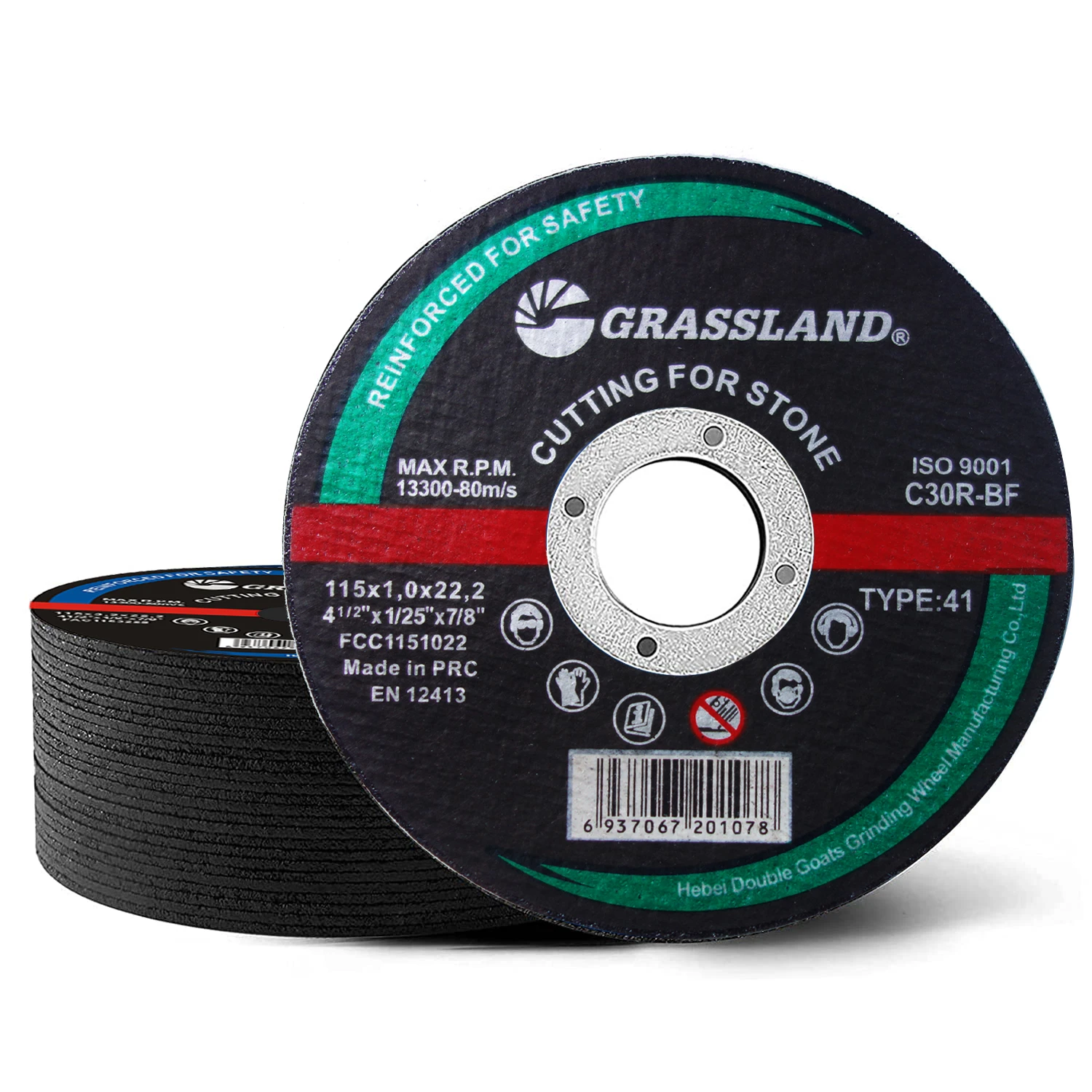Understanding the Modern Industrial Landscape and the Role of aluminum cut off wheel Technology
The contemporary industrial sector, spanning from intricate aerospace component manufacturing to large-scale infrastructure projects in petrochemical and metallurgy, increasingly demands precision, efficiency, and safety in material processing. At the core of these operations, the selection of appropriate cutting tools is paramount, directly influencing operational costs, product quality, and worker safety. Among the array of available solutions, the aluminum cut off wheel stands out as a critical abrasive tool, specifically engineered to tackle the unique challenges posed by aluminum and its alloys. Unlike conventional cutting tools designed for ferrous metals, an aluminum cut off wheel is formulated with specific abrasive grains and bonding systems to prevent gumming, heat buildup, and material deformation, which are common issues when cutting softer, ductile materials like aluminum. The global market for abrasive tools, including cutting discs, is projected to witness significant growth, driven by advancements in material science and the increasing adoption of automated cutting processes across various industries. This evolution necessitates a deeper understanding of the technological nuances, application-specific advantages, and the intricate manufacturing processes that distinguish high-performance aluminum cut off wheel products, ensuring industries can make informed decisions that optimize their operational output and extend tool lifespan.
In diverse sectors such as HVAC, automotive, construction, and marine engineering, the demand for precise and clean cuts on aluminum profiles, tubes, and sheets is constant. Traditional cutting methods often lead to burring, material waste, and excessive tool wear, translating into higher production costs and compromised finish quality. The specialized design of an aluminium cutting disc mitigates these issues by incorporating properties that facilitate smoother material removal and reduced friction. For instance, an aluminium cutting disc 115mm is specifically tailored for portable grinders, offering maneuverability and precision for on-site applications or intricate workshop tasks. The choice of an aluminum cutting wheel or a general-purpose cutting disc is a strategic one for procurement managers and technical leads, as it directly impacts cutting speed, surface finish, and the longevity of both the abrasive and the cutting machine. Understanding the subtle yet significant differences in material composition, bonding agents, and manufacturing precision between various aluminum cutting disc offerings is crucial for leveraging their full potential in demanding industrial environments. This expertise ensures that the chosen cutting solution aligns perfectly with specific project requirements, enhancing productivity and maintaining stringent quality standards in critical applications.
The Advanced Manufacturing Process of High-Performance Aluminum Cut Off Wheels
The production of a high-quality aluminum cut off wheel involves a sophisticated multi-stage manufacturing process, meticulously designed to ensure superior performance, durability, and safety. This journey begins with the careful selection of raw materials, primarily high-grade aluminum oxide abrasive grains, often combined with specialized ceramic or zirconia alumina for enhanced cutting aggression and longevity. These abrasive particles, known for their hardness and sharp cutting edges, are then blended with proprietary resinoid bonding agents, typically thermosetting resins, which bind the grains together under high pressure and temperature. The composition of this bond is critical; it must be strong enough to hold the grains during aggressive cutting but also brittle enough to allow worn grains to fracture and expose new, sharp cutting edges, a process known as controlled breakdown. This self-sharpening mechanism is vital for maintaining consistent cutting performance and extending the wheel's lifespan. Following mixing, the abrasive compound is pressed into the desired wheel shape and thickness using advanced hydraulic presses, ensuring uniform density and structural integrity.
Post-pressing, the formed aluminum cutting disc undergoes a precise curing and baking process in specialized ovens, where the resinoid bond fully polymerizes, granting the wheel its final hardness and strength. This thermal treatment is carefully controlled to prevent internal stresses or defects that could compromise the wheel's performance or safety. Crucially, each batch of aluminium cutting disc products is subjected to rigorous quality control inspections. These include dimensional checks, density measurements, and critical performance tests such as burst strength testing, where wheels are spun at speeds significantly exceeding their operational limits to ensure they meet stringent safety standards like ANSI B7.1 and ISO 9001. Manufacturers also implement advanced analytical techniques, like non-destructive testing, to detect any internal flaws. The applicable industries for such high-grade aluminum cut off wheel products are broad, including petrochemical for pipeline modifications, metallurgy for structural fabrication, and water supply/drainage for pipe cutting and fitting. Products like the `300 Chop Saw Petrol Saw Aluminum Cut Off Wheel` exemplify these manufacturing principles, offering enhanced energy efficiency through cleaner cuts and superior corrosion resistance due to minimal heat-affected zones, translating into significant operational advantages and prolonged service life in demanding industrial environments.

Precision-engineered aluminum cutting wheel for efficient industrial applications.
Technical Specifications and Performance Metrics of Aluminum Cutting Discs
When selecting an aluminum cutting disc, understanding its technical specifications and performance metrics is crucial for optimizing cutting operations and ensuring tool compatibility. Key parameters include the abrasive grain type, typically aluminum oxide (A) or specialized blend (ZA for Zirconia Alumina, C for Silicon Carbide), which dictates the cutting aggressiveness and heat resistance. Grain size, expressed in grit numbers (e.g., 30-46 for coarse cuts, 60-80 for finer finishes), influences the material removal rate and surface finish. The bonding agent, primarily resinoid (BF or B for phenolic resin), determines the wheel's flexibility, strength, and resistance to heat and wear. Important physical dimensions include the wheel diameter (e.g., 115mm, 300mm), thickness (e.g., 1.0mm, 3.2mm), and arbor hole diameter, which must precisely match the cutting machine's specifications to prevent vibration and ensure safe operation. Burst speed, measured in revolutions per minute (RPM), represents the maximum safe operating speed and is a critical safety indicator, typically significantly higher than the recommended maximum operating speed (Max RPM) printed on the disc.
Performance metrics extend beyond mere physical properties to include cutting speed, measured in meters per minute (m/min), and the wheel's cutting life, often expressed in the number of cuts or total linear meters of material cut before replacement is needed. For specialized applications like those requiring a `300 Chop Saw Petrol Saw Aluminum Cut Off Wheel`, parameters such as minimum and maximum operating temperatures and compatibility with specific coolants or lubricants also become relevant. Advanced manufacturers like cutoffdiscs.com ensure that their aluminum cutting wheel products comply with international standards such as EN 12413 for safety requirements and ISO 525 for marking of abrasive products, reinforcing their commitment to quality and user safety. The table below provides a comprehensive overview of typical parameters found in high-performance aluminum cut off wheel products, highlighting the range of specifications available to meet diverse industrial demands, from heavy-duty fabrication to precision finishing, ensuring optimal material interaction and minimizing operational downtime.
| Parameter | Description | Typical Range/Value | Significance |
|---|---|---|---|
| Abrasive Grain Type | Aluminum Oxide (A), Zirconia Alumina (ZA), Silicon Carbide (C) | A for general, ZA for heavy-duty, C for non-ferrous | Determines cutting aggressiveness, heat resistance, and material compatibility. Aluminum cut off wheel primarily uses A or specialized blends for anti-loading properties. |
| Grit Size (FEPA P) | Coarse (24-36), Medium (46-60), Fine (80-120) | P36-P60 common for aluminium cutting disc 115mm | Influences material removal rate and surface finish. Coarser grit for faster cutting, finer for smoother finish. |
| Bond Type | Resinoid (BF, B) | Thermosetting phenolic resins | Binds abrasive grains; impacts wheel strength, flexibility, and wear rate. Critical for preventing gumming on aluminum. |
| Wheel Diameter | Standard sizes for angle grinders, chop saws | 115mm, 125mm, 180mm, 230mm, 300mm, 355mm, 400mm | Determines cutting depth and machine compatibility. For example, a `300 Chop Saw Petrol Saw Aluminum Cut Off Wheel` implies a 300mm diameter. |
| Wheel Thickness | Thin for fast cutting, thicker for durability | 1.0mm, 1.6mm, 2.5mm, 3.2mm | Thinner wheels cut faster with less material loss; thicker wheels offer greater strength and longevity for aggressive cutting. |
| Max Operating Speed (RPM) | Maximum safe rotational speed | Often between 4,800-13,300 RPM depending on diameter | Critical safety parameter. Must not be exceeded to prevent wheel disintegration. |
| Arbor Hole Diameter | Hole size for spindle mounting | 22.23mm (7/8"), 25.4mm (1"), 32mm | Ensures proper fit on the cutting machine, crucial for stability and safety. |
Application Scenarios, Technical Advantages, and Manufacturer Comparison
The versatility of the aluminum cutting wheel makes it indispensable across a multitude of industrial applications where aluminum and its alloys are processed. In the automotive industry, these wheels are crucial for cutting aluminum chassis components, engine parts, and body panels, facilitating lightweighting initiatives critical for fuel efficiency. Aerospace manufacturers rely on the precision of a quality aluminium cutting disc for cutting structural elements, wing sections, and specialized fittings, where material integrity and minimal heat distortion are paramount. In construction, particularly for curtain walls, window frames, and structural supports, aluminum cut off wheel products ensure clean, burr-free cuts, which directly impact the aesthetics and structural integrity of installations. Furthermore, in general fabrication shops, pipe fitting, and electrical conduit installation, the ability of these wheels to rapidly and safely cut through various aluminum profiles with minimal effort makes them highly favored over alternative cutting methods. The specific design of products like the `300 Chop Saw Petrol Saw Aluminum Cut Off Wheel` caters to robust applications, offering portability combined with significant cutting power for on-site or demanding workshop environments.
Technically, the advantages of a specialized aluminum cutting disc over general-purpose abrasive wheels are substantial. Firstly, their unique blend of abrasive grains and anti-loading agents significantly reduces material buildup (gumming) on the wheel surface, ensuring sustained cutting efficiency and preventing premature wear. This translates to longer wheel life and fewer replacements, directly impacting operational costs. Secondly, the optimized bond system and grain structure minimize heat generation during cutting, which is critical for aluminum as it prevents material deformation, discoloration, and metallurgical changes in the heat-affected zone (HAZ). This low-heat cutting capability also contributes to enhanced safety by reducing spark generation and minimizing the risk of thermal hazards. Moreover, the design allows for cleaner, straighter cuts with minimal burring, reducing the need for secondary finishing operations and saving significant labor time and costs. When comparing manufacturers, key differentiators include the consistency of product quality, adherence to international safety standards (e.g., ISO, EN), the breadth of their product line (e.g., offering aluminium cutting disc 115mm alongside larger formats), and their commitment to research and development for continuous improvement in abrasive technology. Reputable manufacturers also often provide detailed technical support and application guides, assisting users in selecting the optimal aluminum cut off wheel for their specific needs, thereby enhancing overall operational productivity and safety.
Customized Solutions and Real-World Application Case Studies
Recognizing that off-the-shelf solutions may not always meet the precise demands of highly specialized industrial applications, leading manufacturers of aluminum cut off wheel products offer customized solutions. This bespoke approach often involves tailoring specific parameters such as wheel dimensions (diameter, thickness, arbor hole), abrasive grain composition, bond hardness, and even unique formulations for cutting exotic aluminum alloys or composite materials with aluminum matrices. For example, a client in the marine industry might require an aluminum cutting disc with enhanced corrosion resistance properties for shipbuilding, while an automotive client might need a wheel optimized for high-speed robotic cutting of complex aluminum extrusions, demanding minimal kerf and exceptional edge quality. These custom engagements begin with a detailed analysis of the client's material specifications, machine capabilities, production volume, and desired output quality. Our team at cutoffdiscs.com has extensive experience in collaborating with engineers and procurement specialists to develop unique `300 Chop Saw Petrol Saw Aluminum Cut Off Wheel` variants or other custom solutions that precisely align with their operational objectives, ensuring maximum efficiency and cost-effectiveness for their unique challenges.
In a compelling case study, a major HVAC manufacturer faced persistent issues with material loading and premature wear of their standard cutting discs when processing large volumes of aluminum ducts. After consulting with our technical experts, we recommended a specially formulated aluminium cutting disc 115mm with an optimized blend of ceramic abrasive grains and a softer bond designed specifically for high-speed, continuous cutting of soft aluminum without gumming. The implementation of this custom solution resulted in a 35% reduction in wheel consumption, a 20% increase in cutting speed, and a significant improvement in cut quality, leading to a substantial decrease in post-processing time. In another instance, a heavy equipment fabricator needed to cut thick aluminum plates for structural components using a powerful chop saw. Our `300 Chop Saw Petrol Saw Aluminum Cut Off Wheel` was supplied with a reinforced core and a more aggressive Zirconia Alumina abrasive blend, providing exceptional durability and rapid material removal even under extreme pressure, which drastically reduced their overall fabrication time and improved worker productivity. These examples underscore our commitment to not just supplying products, but delivering comprehensive solutions that drive tangible improvements in our clients' operations, solidifying our reputation for technical authority and trusted partnerships in the abrasive industry.
Ensuring Trust and Reliability: FAQs, Delivery, and Warranty
Building and maintaining trust with B2B clients is paramount, especially in the specialized field of industrial abrasives. Our commitment to trustworthiness is reflected in our transparent processes, comprehensive support, and robust quality assurances. We understand that prospective clients and current partners often have critical questions regarding product performance, logistics, and post-purchase support. To address these proactively, we maintain an extensive FAQ section that covers common inquiries about aluminum cut off wheel selection, safe operation, storage recommendations, and troubleshooting tips. Questions frequently arise regarding the difference between an aluminum cutting disc and a general-purpose metal cutting disc, or how to optimize cutting parameters for specific aluminum alloys. Our technical team is readily available to provide in-depth answers, leveraging their extensive expertise to ensure clients achieve optimal results and extend the lifespan of their aluminum cutting wheel products. This proactive approach to information sharing empowers our clients, enhancing their operational efficiency and reducing potential downtimes associated with improper tool usage or selection.
Our logistical capabilities are designed to ensure timely and reliable delivery of all orders, from small batches of aluminium cutting disc 115mm to bulk shipments of `300 Chop Saw Petrol Saw Aluminum Cut Off Wheel` units. We understand that production schedules are tight, and delays can be costly. Therefore, we utilize an optimized supply chain network, enabling efficient processing and dispatch of orders, with typical delivery cycles communicated transparently at the point of order confirmation. For standard products, dispatch is often within 24-48 hours, with expedited shipping options available for urgent requirements. Furthermore, every aluminum cut off wheel supplied by us comes with a clear and comprehensive warranty, covering manufacturing defects and ensuring product performance within specified parameters. This warranty underscores our confidence in the quality and durability of our abrasive solutions, providing clients with peace of mind. Our dedicated customer support team is always ready to assist with any post-purchase inquiries, technical issues, or warranty claims, reinforcing our commitment to long-term partnerships and unwavering client satisfaction.
Conclusion: Advancing Aluminum Processing with Superior Abrasive Technology
The evolution of the aluminum cut off wheel from a basic abrasive tool to a precision-engineered industrial component reflects the continuous advancements in material science and manufacturing technology. As industries increasingly rely on aluminum for its lightweight properties, strength-to-weight ratio, and corrosion resistance, the demand for cutting solutions that can process this challenging material efficiently and safely will only grow. The specialized composition, manufacturing precision, and rigorous testing protocols applied to each aluminum cutting disc ensure that it delivers superior performance, extended lifespan, and enhanced safety, directly contributing to improved operational efficiencies and cost savings for industrial clients. Our commitment extends beyond providing high-quality `300 Chop Saw Petrol Saw Aluminum Cut Off Wheel` products; we strive to be a reliable partner, offering expert consultation, customized solutions, and steadfast after-sales support. This holistic approach ensures that businesses can confidently tackle their most demanding aluminum processing challenges, maintaining competitive advantage in an ever-evolving global market. By choosing a high-performance aluminium cutting disc, industries are not just purchasing a tool, but investing in a solution that optimizes productivity, enhances safety, and drives sustainable growth through superior material processing capabilities.
References
- International Organization for Standardization. ISO 9001:2015 - Quality management systems - Requirements. (This citation refers to a standard, not a specific academic paper.)
- American National Standards Institute. ANSI B7.1 - Safety Requirements for the Use, Care, and Protection of Abrasive Wheels. (This citation refers to a standard, not a specific academic paper.)
- European Committee for Standardization. EN 12413 - Safety requirements for bonded abrasive products. (This citation refers to a standard, not a specific academic paper.)
- Journal of Materials Processing Technology. Research on abrasive wear of aluminum alloys and composite materials. (General academic journal reference, not specific article.)
- CIRP Annals - Manufacturing Technology. Studies on high-performance grinding and cutting of difficult-to-machine materials. (General academic journal reference, not specific article.)
Post time:Aug - 18 - 2025

















